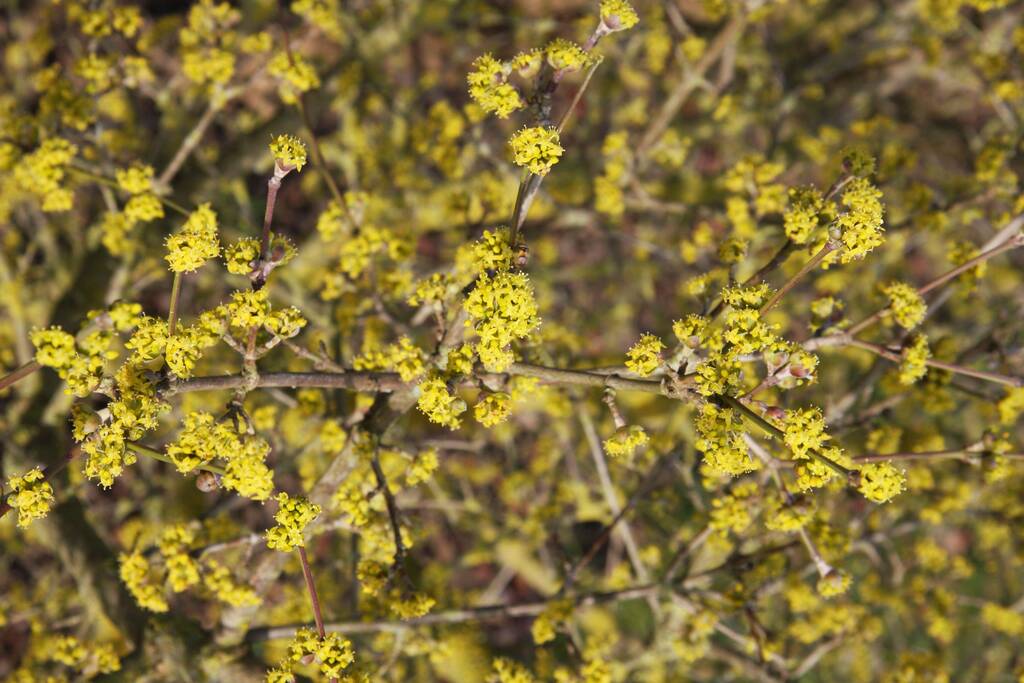Cornus mas, known as Cornelian Cherry Dogwood, is a deciduous shrub or small tree native to Europe and western Asia. It has long been valued for its ornamental display, edible fruit, and adaptability.
One of the earliest trees to bloom each year, Cornus mas produces clusters of small, yellow flowers on bare branches in late winter to early spring. This burst of colour arrives when few other plants are in flower, providing an essential nectar and pollen source for early pollinators. The blossoms create a delicate, cloud-like effect, brightening gardens at a time when they need it most.
After flowering, glossy, dark green leaves appear, creating a dense and attractive canopy through spring and summer. By mid to late summer, the tree produces bright red, oval fruits that resemble cherries. The fruits are edible and can be used for jams, jellies, syrups, compotes, or traditional beverages. Tart when eaten raw, they are rich in vitamin C and antioxidants, making them both decorative and practical.
In autumn, the foliage often develops warm tones of red and purple before dropping. Even in winter, Cornus mas maintains interest with its textured bark and well-structured form. Its flaking, grey-brown bark reveals orange tones beneath, providing subtle colour when the tree is bare.
Cornus mas is a hardy, low-maintenance choice for many garden settings. It thrives in full sun to partial shade and adapts to a variety of soils, provided they are well-drained. Once established, it requires little care beyond light pruning after flowering to maintain shape. It is also tolerant of urban conditions, making it suitable for city gardens as well as rural landscapes.
Typically reaching 4–6 metres in height with a spread of 3–5 metres after ten years, this tree fits comfortably into medium-sized gardens. It works well as a specimen, a part of mixed planting, or even in informal orchard settings where its fruit can be harvested.
With its long history of cultivation, Cornus mas combines beauty with utility. Its early flowers, edible fruit, attractive foliage, and structural winter appeal make it a versatile tree that provides value in every season.
The Cornus mas Tree is a medium-sized deciduous tree that grows to around 4–6 metres in height with a spread of 3–5 metres after ten years. Its growth is generally rounded, with well-spaced branches that create a balanced shape.
In early spring, clusters of bright yellow flowers appear before the leaves, lighting up the bare garden. By summer, the tree carries glossy green foliage and red fruits, which ripen in mid to late summer. These fruits can be harvested for culinary use, adding to the tree’s versatility.
In autumn, the leaves take on red and purple tints, while winter reveals the textured bark and attractive branch framework. Compact yet striking, Cornus mas is ideal as a specimen, a feature in mixed borders, or a small orchard tree, offering ornamental beauty and practical benefits year-round.





